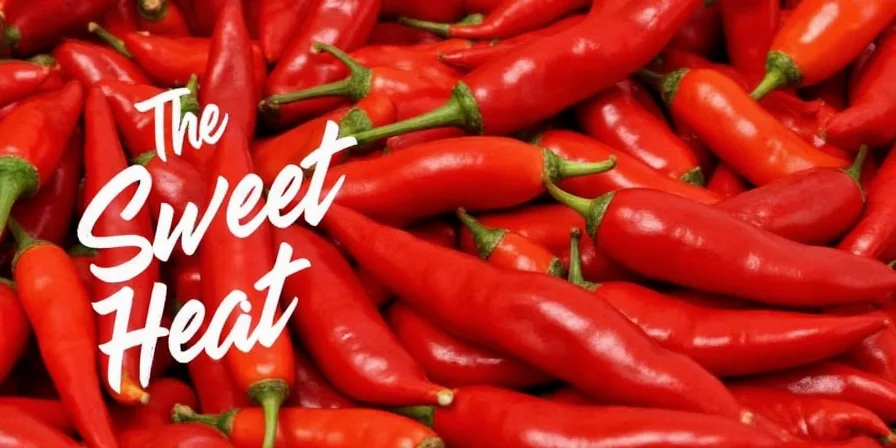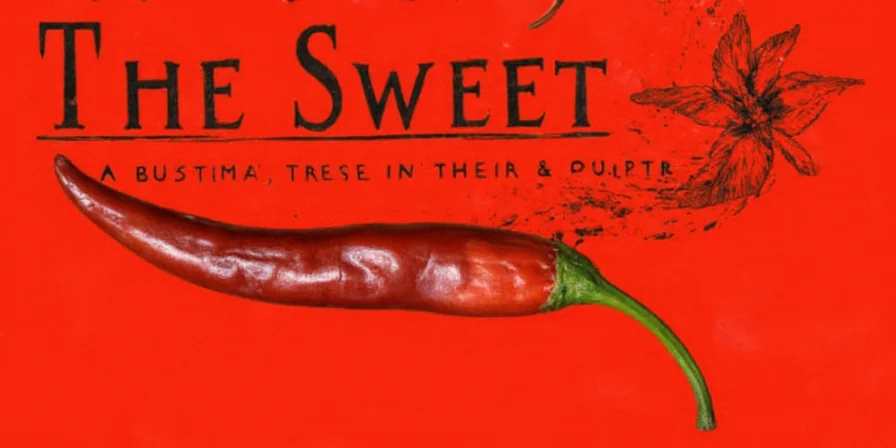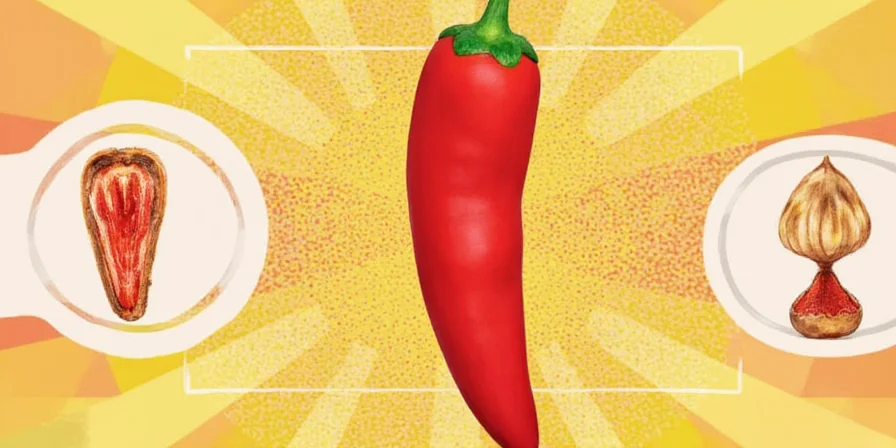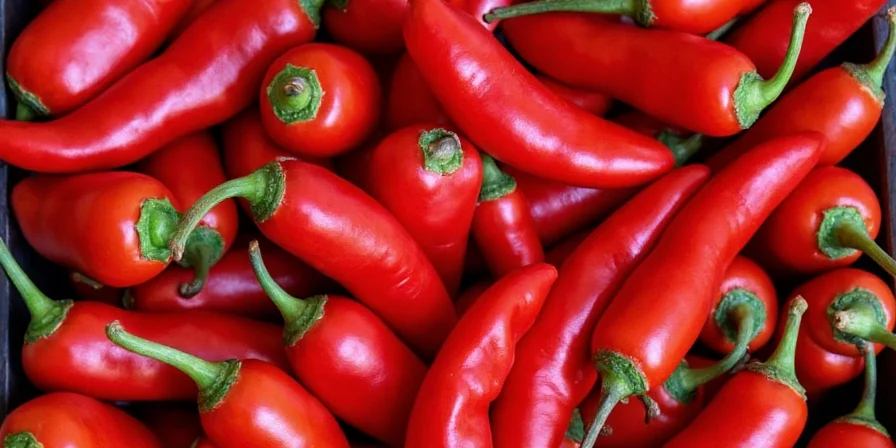The Sweet Heat: Uncovering the Secrets of the Sweetest Chili Pepper in Spicy Cuisine
Table of Contents
- Introduction: The Paradox of Sweet Heat
- What Makes a Chili 'Sweet'?
- Top 5 Sweetest Chili Peppers You Must Try
- Culinary Tips: Cooking with Sweet Chili Peppers
- How to Grow Your Own Sweet Chilies
- Health Benefits of Sweet Chili Peppers
- Sweet vs. Heat: Understanding the Scoville Scale
- Delicious Recipes Featuring Sweet Chili Peppers
- Conclusion: Embrace the Sweet Side of Spice
Introduction: The Paradox of Sweet Heat
If you're like me—a self-proclaimed spice enthusiast—you've probably spent hours debating whether sweetness can coexist with heat. Spoiler alert: it absolutely can! Enter the sweetest chili pepper, a flavor bomb that defies logic by delivering both fruity notes and gentle warmth without knocking your socks off.

In this article, we’ll explore what makes these chilies so special, which ones are worth your time, and how you can make them a star ingredient in your kitchen or garden.
What Makes a Chili 'Sweet'?
Biology meets taste buds here! The sweetness in chilies comes from natural sugars and aromatic compounds like esters and terpenes—think of them as nature's perfume ingredients for flavor. Unlike their fiery cousins, sweet chilies often have lower capsaicin levels, making them more palatable for folks who want spice without tears.
The Science Behind the Flavor
| Flavor Compound | Effect on Taste |
|---|---|
| Esters | Add fruity, floral notes |
| Terpenes | Create aromatic depth |
| Sugars (Glucose, Fructose) | Balance heat and enhance overall flavor |
Top 5 Sweetest Chili Peppers You Must Try
Ready to meet your new favorite pepper? Here’s a list of the top five sweetest varieties, ranked not just by sugar content but also by versatility and availability:
- Bell Peppers: Technically a chili, though rarely thought of one. They’re packed with sweetness and zero heat.
- Poblano (Ancho when dried): Earthy with a touch of sweetness, perfect for stuffing.
- Mango Habanero: Tropical vibes with less heat than traditional habaneros.
- Shishito Peppers: Smoky-sweet with a surprise heat in about 1 out of every 10 peppers.
- Cubanelle Pepper: Mild, citrusy, and great for sautéing or grilling.
Culinary Tips: Cooking with Sweet Chili Peppers
Sweet chilies are incredibly versatile. Whether you’re roasting, grilling, or tossing into a stir-fry, here are some expert-approved techniques to get the most flavor out of your peppers:
Taste Test Tip #1: Roast It Right
Roasting sweet peppers caramelizes their sugars and deepens the flavor. Place them directly over a flame or under the broiler until blistered. Then seal them in a bag or bowl to steam off the skin. The result? Silky smooth and smoky-sweet perfection!
Taste Test Tip #2: Pair with Citrus or Vinegar
Sweetness shines when contrasted. A squeeze of lime or a splash of balsamic vinegar can elevate dishes with sweet chilies to restaurant-level deliciousness.

Taste Test Tip #3: Don’t Overcook!
Unlike hot chilies, which mellow with long cooking, sweet chilies lose their delicate flavors when boiled or simmered too long. Treat them like herbs—add them toward the end for maximum impact.
How to Grow Your Own Sweet Chilies
Want to take your love affair with sweet chilies to the next level? Try growing your own! Here’s a quick planting guide to get started:
- Soil Type: Well-draining, fertile soil rich in organic matter
- Water Needs: Moderate; avoid waterlogging
- Temperature: Thrives in warm climates (70–85°F / 21–29°C)
- Fertilizer: Balanced NPK (Nitrogen, Phosphorus, Potassium) blend
- Harvest Time: Most sweet peppers are sweeter when fully ripe—wait until they turn color!
Health Benefits of Sweet Chili Peppers
It turns out that indulging in sweet chilies isn't just a flavor fest—it’s also good for your health! Here are a few reasons to load up your plate:
- Vitamin C Powerhouse: One cup of chopped red bell pepper has twice your daily dose of vitamin C—more than an orange!
- Antioxidant Boost: Capsanthin gives red peppers their vibrant hue and acts as a powerful antioxidant.
- Heart Health: Fiber, potassium, and magnesium help regulate blood pressure and cholesterol levels.
- Eye Health: Lutein and zeaxanthin protect against age-related macular degeneration.

Sweet vs. Heat: Understanding the Scoville Scale
You might be surprised to learn that many sweet chilies don’t even register on the Scoville scale—the measure of spicy heat. But when they do, it’s usually way below 1,000 SHU (Scoville Heat Units). For reference, a jalapeño starts at around 2,500 SHU.
| Pepper | SHU Range | Sweetness Level |
|---|---|---|
| Bell Pepper | 0 | High |
| Shishito | 0–100 | Medium-High |
| Cubanelle | 100–1,000 | Medium |
| Mango Habanero | 100,000–350,000 | Low-Medium (varies) |
| Jalapeño | 2,500–8,000 | Low |
Delicious Recipes Featuring Sweet Chili Peppers
Let’s get real—what’s the point of knowing all this if you can’t eat your knowledge? Here are three easy recipes to try at home:
1. Sweet Chili Grilled Chicken Skewers
- Marinate chicken chunks in olive oil, lime juice, garlic, salt, and chopped mango habanero
- Skewer with cubanelle peppers and onions
- Grill until charred and serve with a cold drink and friends
2. Shishito Pepper Tacos with Lime Crema
- Blister shishito peppers in a cast iron skillet
- Top soft tortillas with peppers, avocado slices, and a drizzle of crema mixed with lime zest
- Garnish with cilantro and radishes
3. Sweet & Smoky Roasted Red Pepper Pasta
- Blend roasted red bell peppers with garlic, olive oil, and Parmesan cheese
- Toss with cooked spaghetti and top with fresh basil
- Add crushed red pepper flakes for a hint of extra heat
Conclusion: Embrace the Sweet Side of Spice
Sweet chili peppers prove that spice doesn’t always have to mean suffering. From the crisp bite of a green bell to the tropical kick of a mango habanero, there’s a whole spectrum of flavor waiting for you beyond pure heat.
So go ahead—stock your pantry, plant your garden, and experiment in the kitchen. Let the sweetest chili pepper redefine what you think about spice. After all, life is short…why not make it a little sweeter?











 浙公网安备
33010002000092号
浙公网安备
33010002000092号 浙B2-20120091-4
浙B2-20120091-4